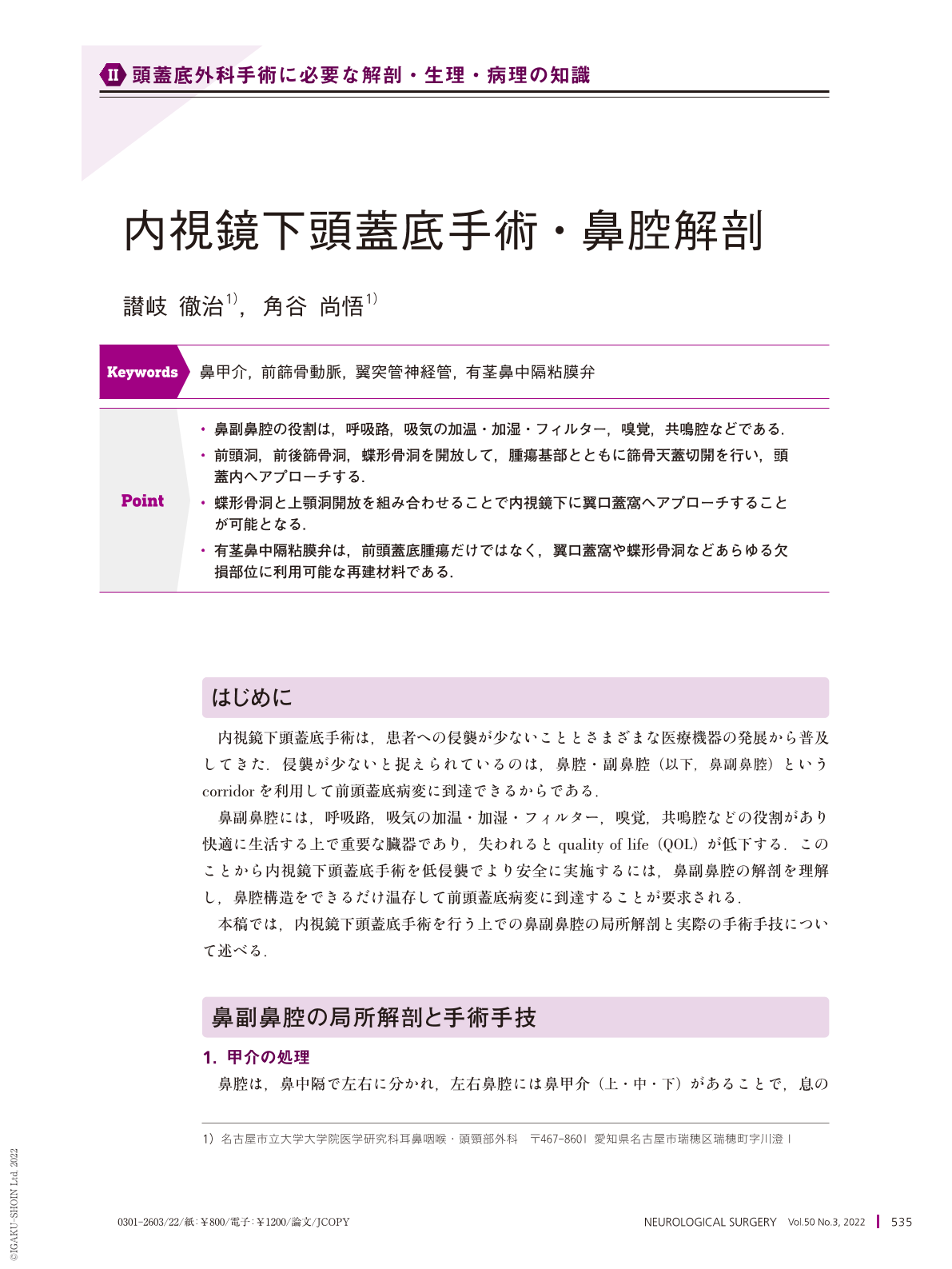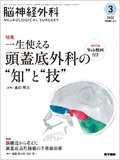Japanese
English
- 有料閲覧
- Abstract 文献概要
- 1ページ目 Look Inside
- 参考文献 Reference
Point
・鼻副鼻腔の役割は,呼吸路,吸気の加温・加湿・フィルター,嗅覚,共鳴腔などである.
・前頭洞,前後篩骨洞,蝶形骨洞を開放して,腫瘍基部とともに篩骨天蓋切開を行い,頭蓋内へアプローチする.
・蝶形骨洞と上顎洞開放を組み合わせることで内視鏡下に翼口蓋窩へアプローチすることが可能となる.
・有茎鼻中隔粘膜弁は,前頭蓋底腫瘍だけではなく,翼口蓋窩や蝶形骨洞などあらゆる欠損部位に利用可能な再建材料である.
Endoscopic endonasal skull base surgery has become popular due to its minimally invasive nature to the patient and the development of various medical devices. The reason why it is considered less invasive is that it is possible to reach the anterior skull base lesion using the corridor of the nasal cavity and paranasal sinuses.
The roles of the nasal sinuses include acting as breathing pathways, warming, humidifying, and filtering of inhaled air, olfaction, and being a resonant cavity, all of which are important for a comfortable life, and the loss of these functions reduces the quality of life. Therefore, to perform endoscopic endonasal skull base surgery in a minimally invasive and safe manner, it is necessary to understand the anatomy of the nasal sinuses to reach anterior skull base lesions while preserving nasal structures as much as possible.
This article describes the normal local anatomy of the nasal cavity and the paranasal sinuses, as well as the surgical techniques, especially the anterior skull base approach and the pterygopalatine fossa approach, for endoscopic endonasal skull base surgery.

Copyright © 2022, Igaku-Shoin Ltd. All rights reserved.


